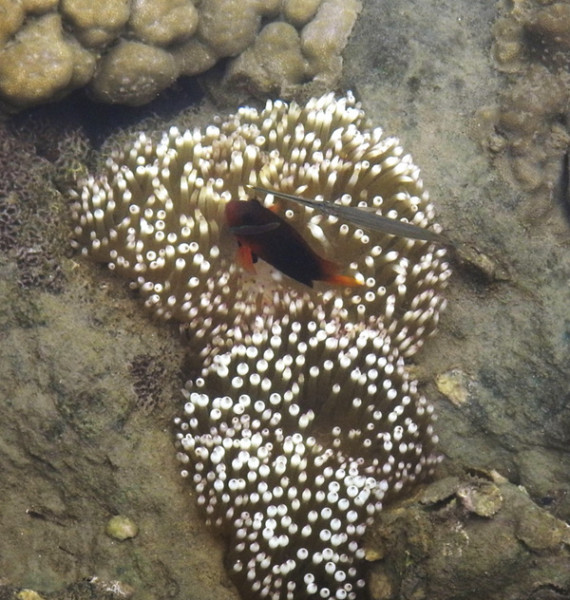Published in the Ocean Watch column, Honolulu Star-Advertiser © Susan Scott
June 2, 2014
Craig and I have been traveling together for 34 years now, and at the end of each journey, he asks me the same question: What was your favorite part of the trip?
After eight weeks of sailing 2,771 miles across the South Pacific, I had so many events, animals and places to choose from that days later I’m still coming up with answers to variations of the question.
 Fish in the marina , New Caledonia, 2006.
Fish in the marina , New Caledonia, 2006.
©2006 Susan Scott
The funniest moment of the trip, for instance, occurred in Suva. When you sail to a foreign port, customs, immigration and quarantine officials come aboard to clear the occupants and boat to enter the country. This can be easy and brief, or not.
After a mix-up in Tonga, where we angered the customs officer, in Fiji we were on high alert.
We soon lightened up, though, when the customs officer asked Craig his one and only question: “How long have you two been married?”
After a moment of silence, Craig said, “Um, I don’t know. Susan?”
The three officials in our cockpit burst out laughing.
“Man,” said the immigration officer as he stamped Craig’s passport, “you are in big trouble now.”
We laughed a lot in Suva, where nearly everyone greeted us with a warm “bula,” Fiji’s equivalent of “aloha.” For smiles, friendliness and just plain fun, Suva was my favorite city.
Sea snakes topped my list of must-see animals for this trip, and at least a dozen of those marine reptiles answered the call. One, a 4-foot-long blue and black banded snake, called a black-lipped krait, surfaced to breathe between Craig and me, snorkeling not 2 feet apart. It ignored us, but we will remember that little black face forever.
I felt even happier that I made this voyage when New Caledonia’s dugongs showed up. Dugongs are the Southern Hemisphere’s sea cows, gentle half-ton mammals that graze on sea grasses growing in shallow coastal waters of the Indian and Southwestern Pacific oceans. (Manatees, dugongs’ close relatives, live only in the Northern Hemisphere.)
In New Caledonia, where sea grass beds are extensive and marine sanctuaries widespread, dugong sightings are routine. We saw four, all brief glimpses of broad, brown, curved backs.
It was enough. Just knowing that these rare and endangered animals were feeding around the boat was a thrill like no other.
After Craig asked me to name my trip favorite, I put the question to him.
Craig likes sailing at night, especially during a new moon when the stars sparkle with intensity. He also likes full moons that turn the ocean silver.
During one of his night watches, he came below deck and touched my arm. “Sorry to wake you,” he said, “but you have to see this.”
The full moon was slowly turning a deep burnt orange as stars popped out like lights on timers. We had sailed into the splendor of a total lunar eclipse, Craig’s perfect night at sea.
We choose different highlights of our travels, but on one point we always agree: Oahu is the best place to live. No matter how good the journey, we’re happy to go home.
Especially by plane. Honu will stay in New Caledonia until our next adventure.